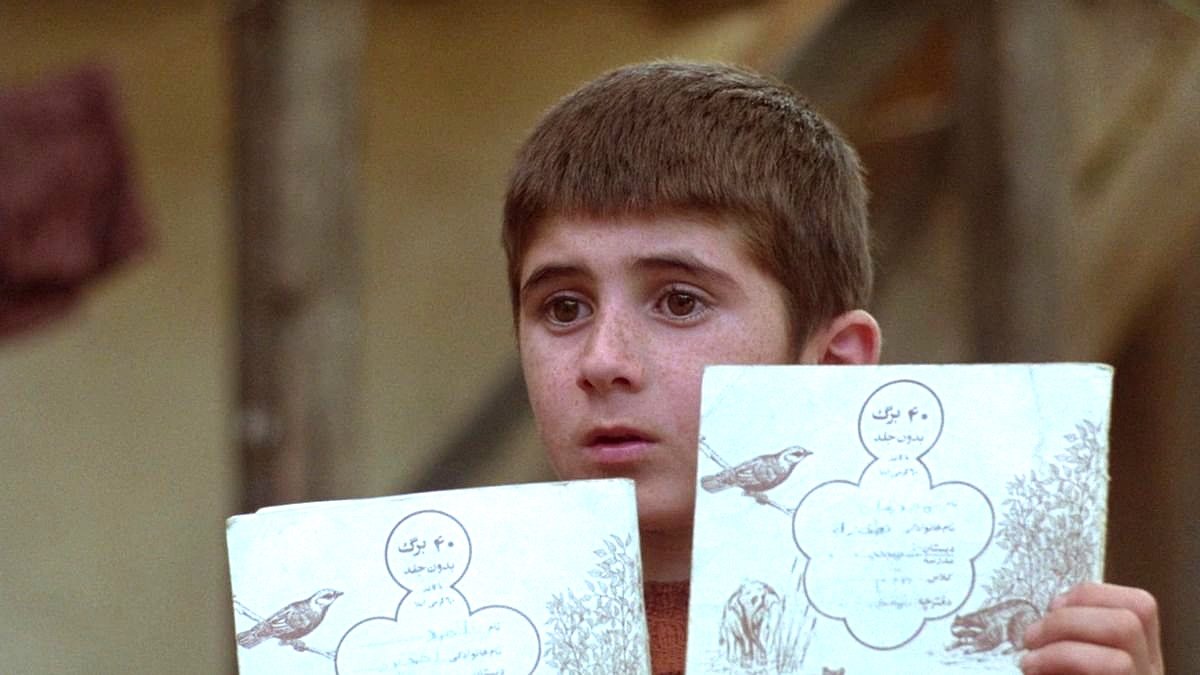 Image 1 of
Image 1 of


Where Is the Friend's Home? (1987)
(Khane-ye doust kodjast?)
![]()
Country: IR
Technical: col/1.66:1 83m
Director: Abbas Kiarostami
Cast: Babek Ahmed Poor, Ahmed Ahmed Poor, Kheda Barech Defai
Synopsis:
A village boy whose classmate has that day got into serious trouble for not doing his homework in his exercise book himself takes the latter item home with his own and spends the evening trying to find where his friend lives so that he can return it to him.
Review:
As mundane a neo-realist set-up as you could wish for (child-centred quest against a quotidian peasant class backdrop), this is also an example of the director transforming his material into something else. His use of non-professional actors has a creakiness at times, but the boy's open-faced ingenuousness trumps any shortcomings in providing an illusion of authenticity in his perpetually concerned expression (Kiarostami apparently gave him mental arithmetic problems to do during takes). Individualised village portraits introduce a dimension of changing times as teacher, grandfather and carpenter mount a defence of tradition, while a donkey remains the only visible means of locomotion but people move from wooden to iron doors in some gesture at upward mobility. In short, there is much to unpick in this deceptively simple narrative whose central emotional thrust (the dogged sense of responsibility of an eight year-old towards his peer) remains uniquely affecting. As the director put it himself: the boy goes looking for a house and finds a friend; which is why the camera stays on the pair for the final shot and the teacher is out of frame.
(Khane-ye doust kodjast?)
![]()
Country: IR
Technical: col/1.66:1 83m
Director: Abbas Kiarostami
Cast: Babek Ahmed Poor, Ahmed Ahmed Poor, Kheda Barech Defai
Synopsis:
A village boy whose classmate has that day got into serious trouble for not doing his homework in his exercise book himself takes the latter item home with his own and spends the evening trying to find where his friend lives so that he can return it to him.
Review:
As mundane a neo-realist set-up as you could wish for (child-centred quest against a quotidian peasant class backdrop), this is also an example of the director transforming his material into something else. His use of non-professional actors has a creakiness at times, but the boy's open-faced ingenuousness trumps any shortcomings in providing an illusion of authenticity in his perpetually concerned expression (Kiarostami apparently gave him mental arithmetic problems to do during takes). Individualised village portraits introduce a dimension of changing times as teacher, grandfather and carpenter mount a defence of tradition, while a donkey remains the only visible means of locomotion but people move from wooden to iron doors in some gesture at upward mobility. In short, there is much to unpick in this deceptively simple narrative whose central emotional thrust (the dogged sense of responsibility of an eight year-old towards his peer) remains uniquely affecting. As the director put it himself: the boy goes looking for a house and finds a friend; which is why the camera stays on the pair for the final shot and the teacher is out of frame.
(Khane-ye doust kodjast?)
![]()
Country: IR
Technical: col/1.66:1 83m
Director: Abbas Kiarostami
Cast: Babek Ahmed Poor, Ahmed Ahmed Poor, Kheda Barech Defai
Synopsis:
A village boy whose classmate has that day got into serious trouble for not doing his homework in his exercise book himself takes the latter item home with his own and spends the evening trying to find where his friend lives so that he can return it to him.
Review:
As mundane a neo-realist set-up as you could wish for (child-centred quest against a quotidian peasant class backdrop), this is also an example of the director transforming his material into something else. His use of non-professional actors has a creakiness at times, but the boy's open-faced ingenuousness trumps any shortcomings in providing an illusion of authenticity in his perpetually concerned expression (Kiarostami apparently gave him mental arithmetic problems to do during takes). Individualised village portraits introduce a dimension of changing times as teacher, grandfather and carpenter mount a defence of tradition, while a donkey remains the only visible means of locomotion but people move from wooden to iron doors in some gesture at upward mobility. In short, there is much to unpick in this deceptively simple narrative whose central emotional thrust (the dogged sense of responsibility of an eight year-old towards his peer) remains uniquely affecting. As the director put it himself: the boy goes looking for a house and finds a friend; which is why the camera stays on the pair for the final shot and the teacher is out of frame.